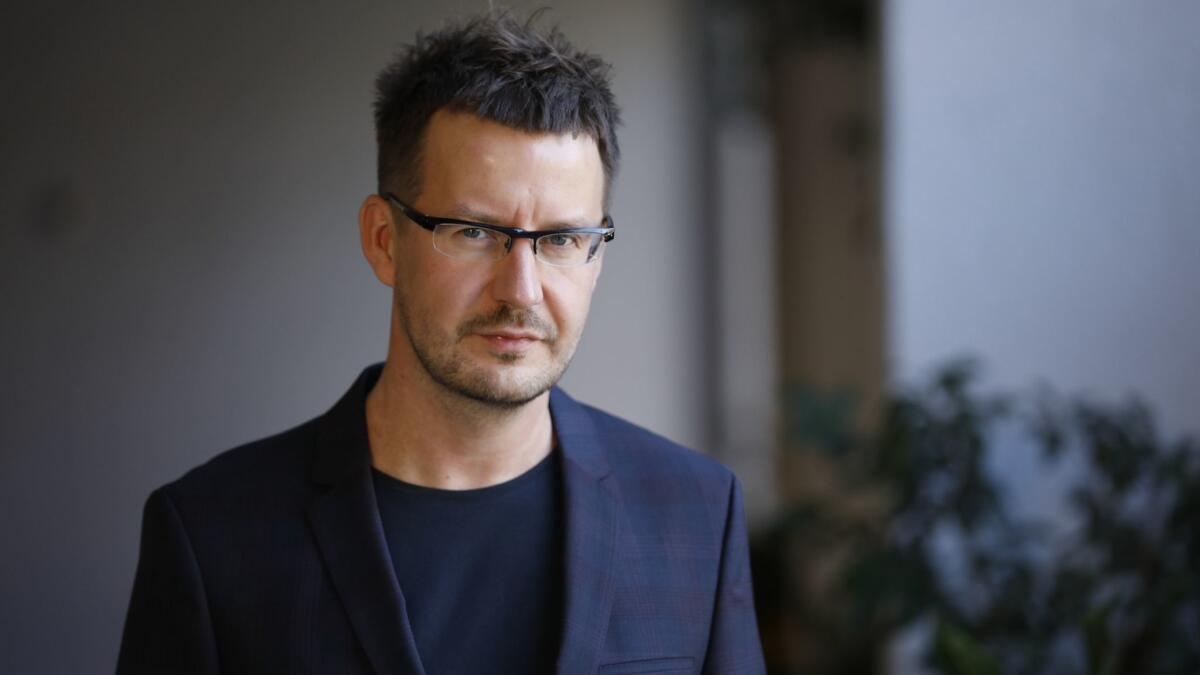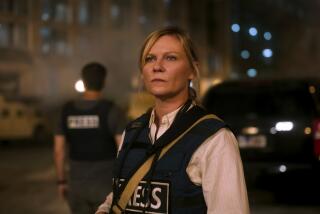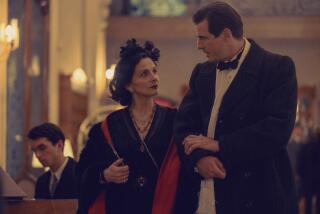In the Polish drama ‘Cold War,’ black and white takes on a multilayered meaning

What might seem the same or similar at first often isn’t upon closer inspection. Take for instance Paweł Pawlikowski’s acclaimed film “Ida.” The Polish drama won the foreign-language film Oscar in 2015 and earned raves and a second Oscar nomination for Lukasz Zal’s gorgeous black and white cinematography. Now Pawlikowski and Zal have collaborated once again on the Cannes-winning “Cold War,” another film shot in black and white and in the 1:33:1 Academy ratio. And yet, all is not what it seems.
“Cold War” chronicles a tumultuous 15-year romance between Zula (Joanna Kulig) and Wiktor (Tomasz Kot), with their first meeting in 1948 in a desolate and makeshift Polish music academy. Originally, because of the subject matter, Zal and Pawlikowski intended to do something completely different from “Ida” and, notably, in color. After two weeks of research they realized that the period of Polish history they were beginning the film with wasn’t necessarily the most colorful in the nation’s history. And what they did find didn’t feel very Polish at all.
“Very quickly we realized this color would look like a Soviet or East German stock, when they bleach colors like pastel colors,” Zal says. “There was no color in Poland [films]. Just black and white. Dark clothes and black and white clothes. It wasn’t like the United States where we had beautiful colors. You come here and everything was gray and bleached.”
While “Cold War” started with the same aesthetic as “Ida” on paper, in execution Zal notes it was “completely different.”
“‘Ida’ is very flat, everything is like a poster, and in ‘Cold War’ we are doing this more in depth,” Zal explains of the digitally shot production. “We are placing the camera quite high and we are building a lot of layers. Foreground, second ground, background and extras. Also, in ‘Ida’ the contrasts were quite low. In ‘Cold War’ we wanted to have a very high contrast because my inspiration for the picture was ‘Citizen Kane,’ ‘Casablanca’ and Goddard’s ‘Vivre sa Vie.’”
We wanted to have this like it’s a picture that has a very distinct texture.
— Lukasz Zal
There is very little sunlight during the winter in Poland, so Zal and Pawlikowski worked with the production design team to make sure they always used dark wood and white pieces of decoration.
“That was a rule. We wanted to have this like it’s a picture that has a very distinct texture,” Zal says. “I was always grading and cutting the light and using a lot of masks just to build these pictures like paintings.”
In Zal’s opinion, the most difficult scene to pull off didn’t involve singing and dancing (there are numerous performances in multiple locations involving Zula’s music troupe), but instead was a seemingly ubiquitous shot of Wiktor crossing the border from East to West Berlin. Not only were large green screens set up to re-create the Berlin skyline, but Pawlikowski wanted to film at sunset, the magic hour for light — a lot of distinct elements to synchronize.
“We had to get five shots in a good light and it was a lot of lighting,” Zal recalls. “Everything was on the dimmers, so after every shot I had to adjust them and we had extras, we have Victor walking and zooming and a dolly shot and cars in the background. All those things that needed to work in this one good shot. I was really, really stressed, but the big part of West Berlin was in post-production and it was a very long process to find the proper one.”
Another shot that Zal is proud of was also filmed as the sun was setting. It’s the last scene in the film. The 37-year-old director of photography refers to what they encountered that day as “kind of magic.”
“We were using no light. It was just beautiful weather,” Zal says. “We were also shooting this last moment [in the countryside]. And when it finished it was completely dark.”
Zal notes that often when making this film they were close to catastrophe. If one thing went wrong, an entire scene could have been lost with little chance to restage it. But it’s clear he thinks that walking that fine line can lead to unforgettable results.
“You have actors, director, camera operator and we are all together there and that’s the power of this amazing meeting of different people’s energies,” Zal says. “That’s the most exciting thing about cinema. You put all those things to the set and something exciting can happen.”
FULL COVERAGE: Get the latest on awards season from The Envelope »
More to Read
From the Oscars to the Emmys.
Get the Envelope newsletter for exclusive awards season coverage, behind-the-scenes stories from the Envelope podcast and columnist Glenn Whipp’s must-read analysis.
You may occasionally receive promotional content from the Los Angeles Times.






